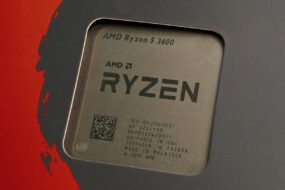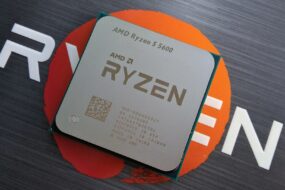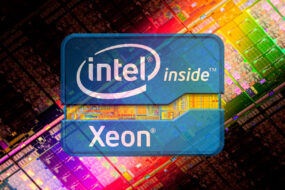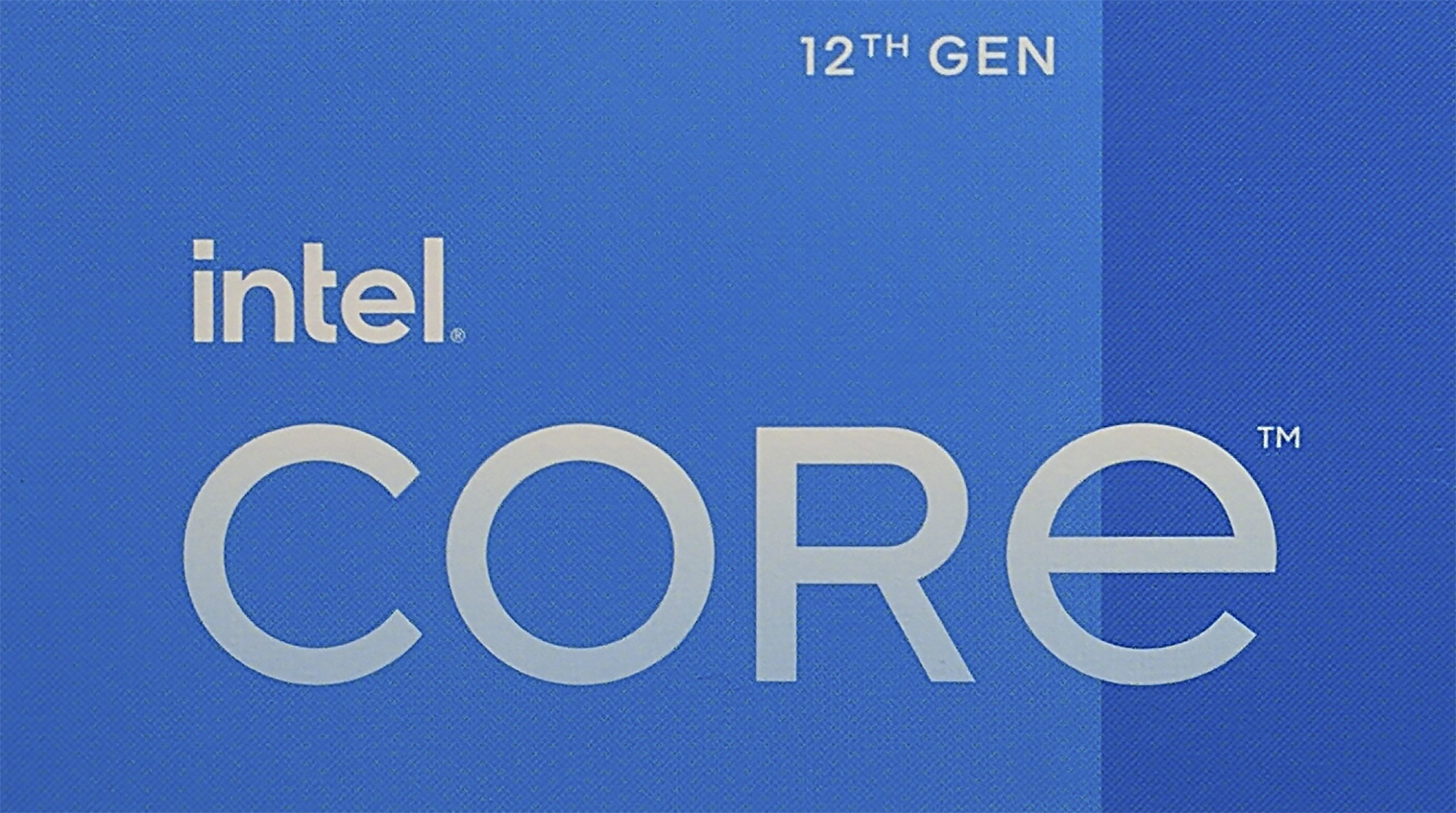
This material is dedicated to a processor with a proud 3700+ rating. But should he be given such a rating? The Internet is teeming with information on this subject. And if you dig in it, you can find out that this processor is really not inferior to the expensive Pentium 4 641 to this day. But the Intel chip can handle two threads per core!
But let’s finish with the story and go directly to the processor. Below is a photo of our test copy of Athlon 64 3700+:
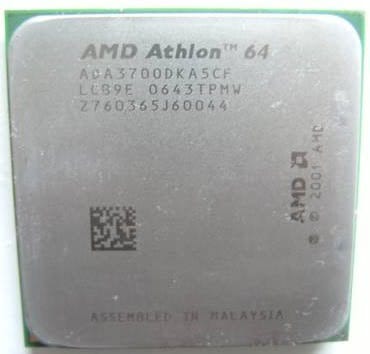
And a screenshot of the CPU-Z program:
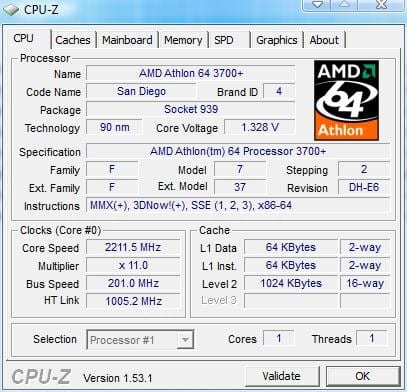
Athlon 64 3700+ processor is based on San Diego 90nm core of revision E6. It is equipped with 1MB L2 cache, operates at a clock speed of 2200MHz, and has a base core voltage of 1.328V. The power consumption of the chip lies in the 90-watt limit. Supported connector type 939.
Test setup
- Processors – AMD Athlon 64 3000+, Athlon 64 3700+
- Cooling system – Cooler Master Hyper TX3
- Matherboard – Biostar NF4UL-A9 (BIOS 6.00 PG)
- RAM: Apacer 512MB PC3200 (2.5-3-3-8)
- Video card: XpertVision 8500GT@732/900MHz
- HDD: Seagate ST340016A 40GB
- Power Supply: Microlab 360W
Software
- Microsoft Windows 7 х64 Home Premium 6.1.7600
- CPU-Z 1.53
- GPU-Z 0.3.4
- Crystal mark 2004
- 3D Mark 2001/2003/2005
- nVidia Force Ware 162.22
- CineBench х64 9.5
- Light Ware Render Bench
- Wprime 1,52
Overclocking
Frankly speaking, I did not expect any surprises from this bench session, because the Biostar NF4UL-A9 motherboard that got for testing did not initially inspire confidence. However, when I started overclocking, I was pleasantly surprised:
The processor voltage has been raised to an extremely acceptable level, that is, by 1.6V. The HyperTransport bus multiplier was reduced to 3, and the system bus frequency was set to 270MHz.
Naive … Athlon 64 3700+ did not take the frequency that its low-frequency brother Athlon 64 3000+ took (albeit with difficulty). The system booted, but when the program was started S&M immediately went to reboot.
Having set 260MHz on the bus, I managed to pass the 10-minute test in S&M, and then the same reboot followed.
And only after the bus frequency was set to 255 MHz, the system passed the 4-hour test without errors or reboots. The final stable frequency is 2809 MHz. I bring to your attention a screenshot:
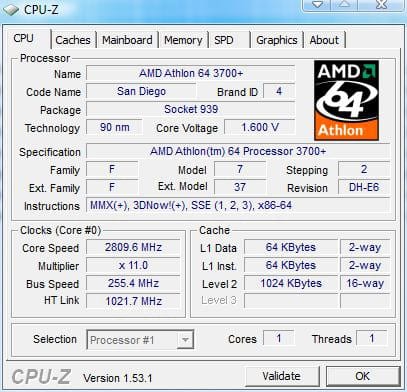
Who cares, I am attaching a “screenshot of death”: the processor was able to boot at a frequency of almost 3GHz, but there was no stability here, nevertheless I managed to save a screenshot of CPU-z:
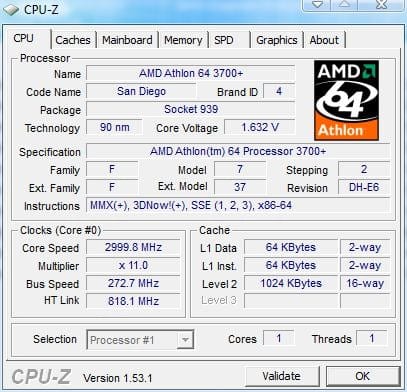
Perhaps if I raised the power supply to 1.7-1.8V, stability would be real, but the too weak power system on the motherboard made me not do such a rash act.
Everywhere stable 2800 MHz is also a decent result. We were able to overtake not only the more expensive Athlon 64 4000+ but also the top processor of that time, the Athlon 64 FX55, operating at 2600 MHz.
If we take AMD’s arguments seriously and trust them completely, then we have made a 4600+ rated processor! This rating has never been assigned to the company’s single-core CPU.
I would like to note the fact that when overclocked to 2809 MHz, this processor warmed up to 67 degrees Celsius on an open bench! So overclocking can cause problems in closed cases and with weak box coolers.
Performance measurements
Rendering
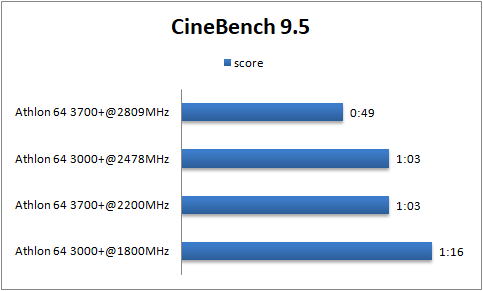
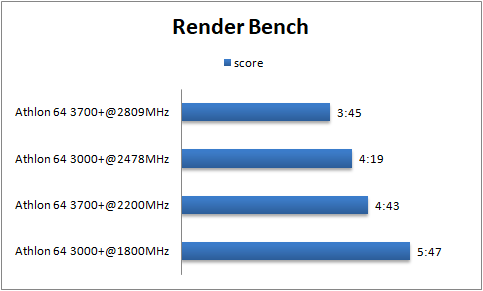
Increase productivity by 20-30% depending on the test. This result is quite satisfactory.
Overall performance
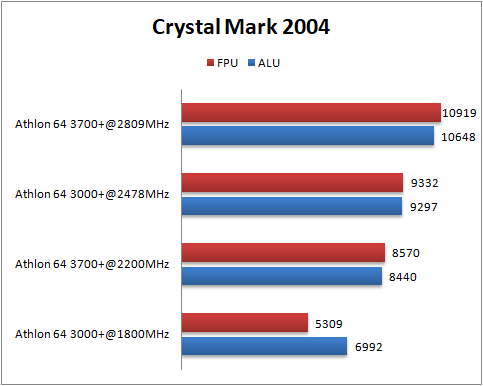
20% gain, sluggish compared to previous testing. But the results themselves are more than impressive.
Games, Synthetics
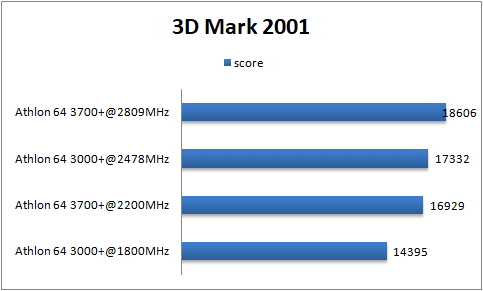
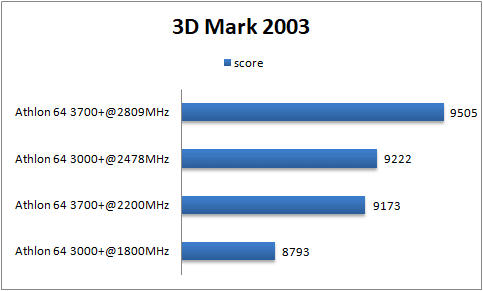
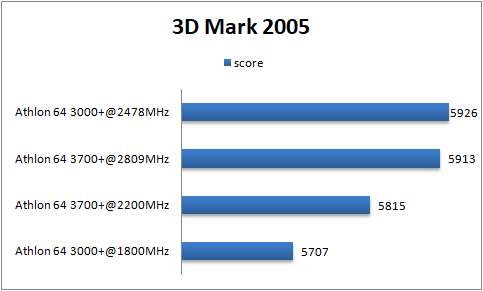
3D Mark 2001, as always, reacts sharply to the processing power of the processor, so the increase in the clock frequency and cache memory here brings the Athlon 64 3700+ a huge lead.
As you may have already noticed, Athlon 64 3700+ without overclocking almost got close to the 3000+ processor overclocked to 2478 MHz. In 3D Mark 2003 the situation changes a little, the Athlon 3700+ does not break away so much in overclocking, here the video card became a brake.
In general, 3D Mark 2005 was somehow inadequate about processor overclocking. It was overtaken by Athlon 3000+ 2478 MHz. I ran the test three more times, but the picture repeated itself, an explanation for this phenomenon has not yet been found.
Games
Move on. The new Resident Evil 5 game has its own built-in benchmark. Now let’s see how the old but rather powerful processor will behave in a fresh game.
All settings were set to the minimum in order to avoid dependence on the video card
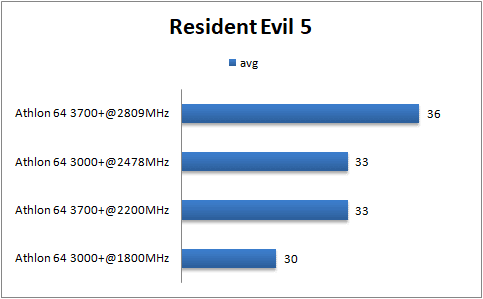
At the minimum settings and without any quality improvement techniques, the Athlon 64 3700+ overclocked to 2800 MHz was still able to achieve a more or less acceptable frame rate.
But who wants to play this? Of course, overclocking completely changes the picture, but even this does not allow raising the settings to at least medium. Who cares, at maximum settings, but without improving the quality, the system showed 10-11 frames. With the same video card, a system based on a dual-core Athlon II X2 240, overclocked to 3600MHz, demonstrates 38-46 frames at maximum settings.
Conclusion and summing up
This processor gave me much higher hopes, but unfortunately, it never met them. The performance of the A64 3700+ is certainly higher than that of its younger fellow tribesman, but the heating is also higher.
The temperature regime, as I said, was too high, and with the case closed it would have been 5-7 degrees higher. Of course, replacing the cooling would solve this problem, but is there any reason to replace it if it does not pay off at all? The question is rhetorical. But if you didn’t save at that time and installed a proper cooler on your Athlon 3700+, you can safely overclock it to 2700MHz +.

